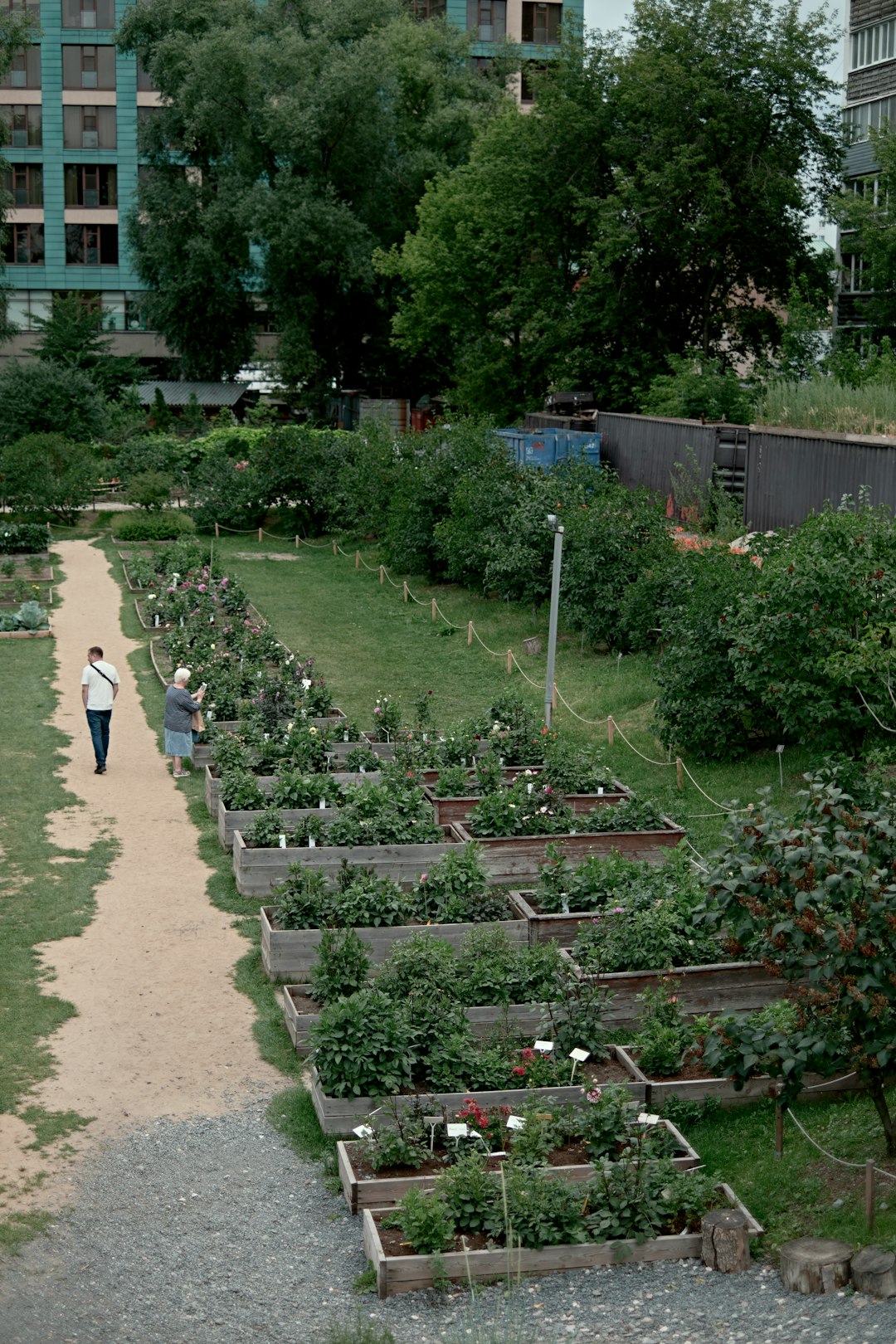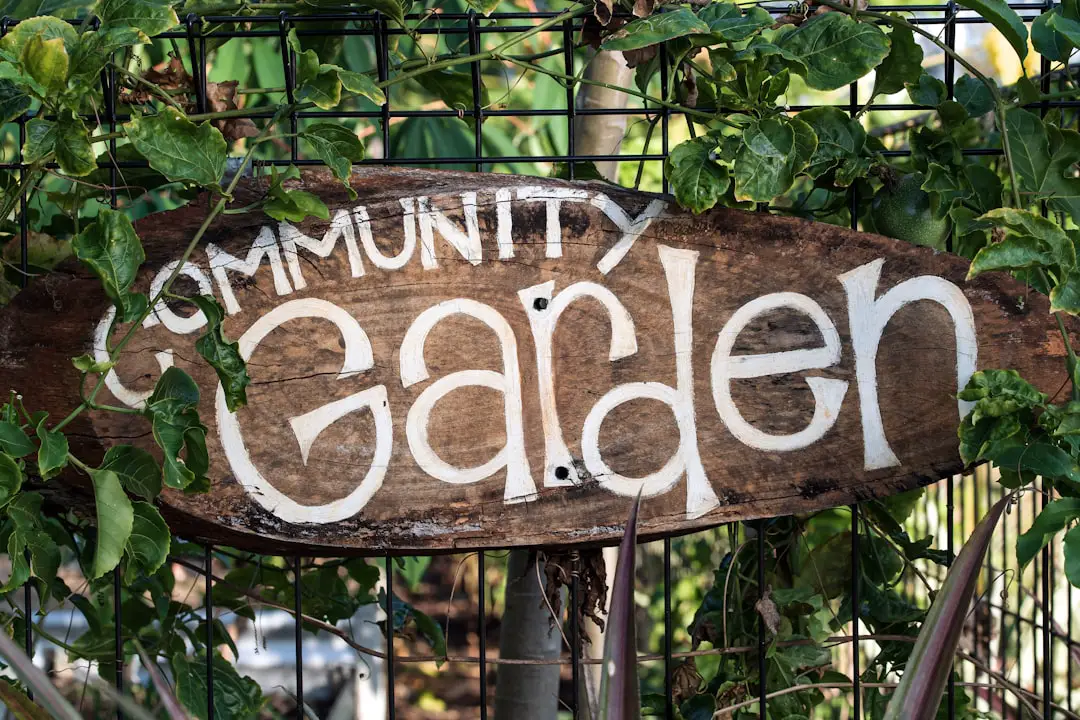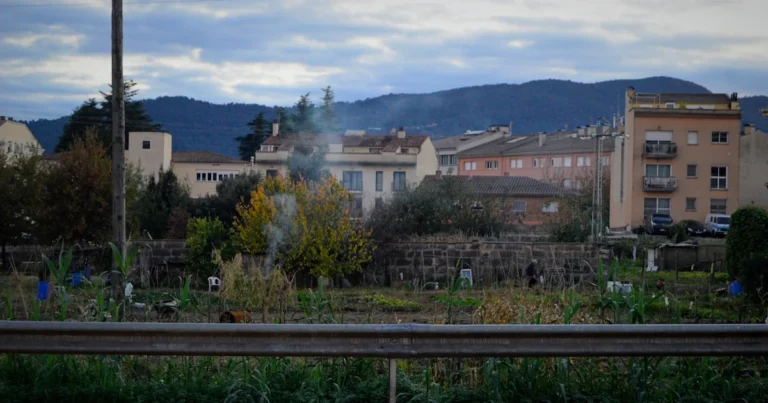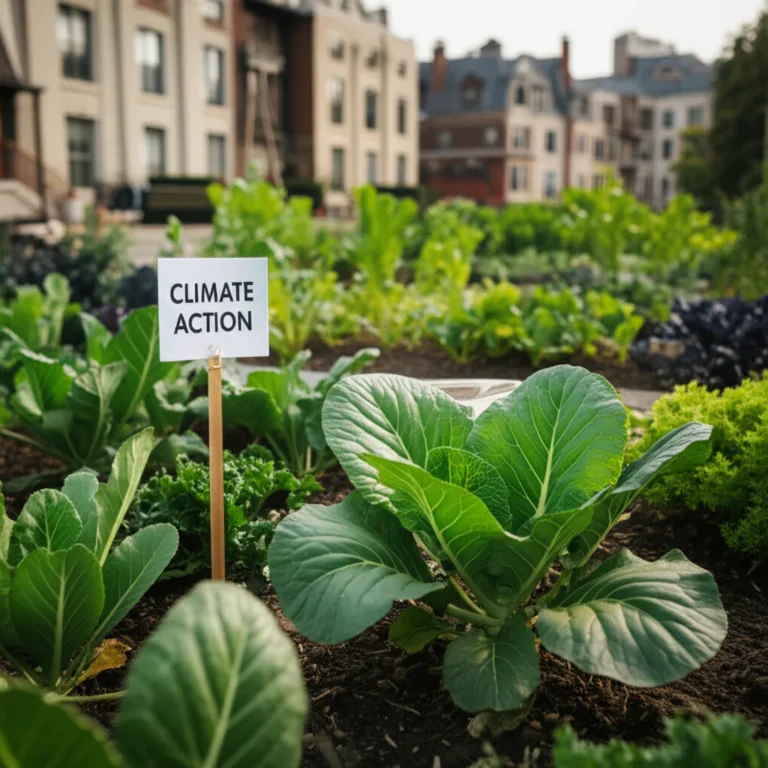Support our educational content for free when you purchase through links on our site. Learn more
Imagine your cozy neighborhood garden suddenly doubling in size overnight. At first, it’s thrilling—more hands to help, more ideas blossoming, and a vibrant buzz of activity. But soon, you notice the once tight-knit group feels a little… lost. People don’t know each other’s names anymore, volunteer burnout is creeping in, and conflicts are sprouting like weeds. Sound familiar? That’s the paradox of community growth: more isn’t always merrier.
In this article, we’ll uncover the 15 sneaky disadvantages that often accompany a growing community, from loss of intimacy and moderation chaos to cultural dilution and environmental impact. Drawing from our hands-in-the-dirt experience at Community Gardening™, plus expert insights and real-world case studies, we’ll also share proven strategies to spot these issues early and keep your community thriving without losing its soul. Ready to dig deeper and grow smarter? Let’s get started!
Key Takeaways
- Growth brings complexity: More members mean more voices, more resources needed, and more challenges to manage.
- Intimacy fades fast: Without intentional efforts, personal connections and community culture can dilute.
- Volunteer burnout is real: Founders and leaders often carry too much weight as communities expand.
- Moderation and governance become critical: Managing conflicts and decisions requires scalable tools and clear processes.
- Sustainability matters: Environmental footprint and legal compliance grow with community size.
- Early detection and proactive planning are essential to turning growth pains into opportunities.
Looking to equip your community with the right tools? Check out scalable platforms like Discourse and decision-making apps like Loomio, or explore books on community building such as Buzzing Communities by Richard Millington.
👉 Shop community management tools on:
Table of Contents
⚡️ Quick Tips and Facts
🌱 From Seed to Sprawl: A Brief History of Community Growth
🤔 What Exactly Is a Disadvantage When a Community Grows?
📈 The 15 Sneaky Downsides of a Booming Community
1. 1️⃣ Loss of Intimacy & “Cheers Bar” Syndrome
2. 2️⃣ Moderation Mayhem & Troll Tsunamis
3. 3️⃣ Decision Paralysis & The Tyranny of Too Many Cooks
4. 4️⃣ Resource Drain & The Hidden Cost of “Free”
5. 5️⃣ Culture Dilution & The Vanilla Effect
6. 6️⃣ Burnout Among Founders & Super-Volunteers
7. 7️⃣ Clique Formation & Micro-Fiefdoms
8. 8️⃣ Knowledge Gaps & The Expertise Paradox
9. 9️⃣ Event Overload & “FOMO Fatigue”
10. 🔟 Brand Dilution & Mission Drift
11. 1️⃣1️⃣ Tech Stack Debt & Platform Pains
12. 1️⃣2️⃣ Legal & Compliance Landmines
13. 1️⃣3️⃣ Economic Inequality & “VIP Creep”
14. 1️⃣4️⃣ Environmental Footprint & The Carbon Cost of Community
15. 1️⃣5️⃣ Data Privacy & The Surveillance Trade-Off
🛠️ How to Spot the Warning Signs Early
🧰 Proven Playbooks to Soften the Blow
🌎 Case Studies: When Growth Became a Double-Edged Sword
🤝 Community Gardening™ Insider Stories
🧪 DIY Toolkit: Measure Your Community’s Growing Pains
Conclusion
Recommended Links
FAQ
Reference Links
⚡️ Quick Tips and Facts
Welcome to the whirlwind world of community growth! Before we dig into the nitty-gritty of disadvantages when a community grows, here are some quick nuggets from the Community Gardening™ team to get you started:
- Growth is a double-edged sword. 🌱 More members mean more energy, ideas, and resources — but also more complexity, noise, and potential conflicts.
- Loss of intimacy is the #1 complaint from growing communities. People start feeling like strangers in a crowd.
- Moderation challenges skyrocket. More members = more content = more trolls and spam to manage.
- Culture dilution happens fast. The unique vibe that made your community special can fade if you’re not careful.
- Burnout risk for volunteers and leaders increases. More work, more expectations, but not always more help.
- Growth without planning can lead to chaos. Think of it like planting a garden without weeding — weeds take over!
If you want to know the 15 sneaky downsides we’ve seen firsthand (and how to dodge them), keep reading! You’ll also get insider tips on spotting warning signs early and proven playbooks to soften the blow. 🌿
For a related deep dive, check out our article on What is a disadvantage of a community garden?.
🌱 From Seed to Sprawl: A Brief History of Community Growth

Communities, much like gardens, start small — a few passionate souls planting seeds of connection and shared purpose. Over time, as word spreads and interest grows, these communities can blossom into sprawling ecosystems. But just as a garden can become overgrown and tangled, so too can a community face challenges as it expands.
Historically, community growth has been celebrated as a sign of success. For example, neighborhood gardening clubs in the 1970s often began with a handful of families and grew into city-wide networks. However, as these groups expanded, they encountered issues like conflicting interests, leadership struggles, and resource shortages.
In the digital age, online communities can explode overnight, thanks to social media and platforms like Facebook Groups or Reddit. This rapid growth brings its own set of challenges, including moderation overload and cultural clashes.
Understanding this history helps us appreciate that growth is natural but requires careful tending — much like our favorite tomato plants. Without pruning and care, things can get wild!
🤔 What Exactly Is a Disadvantage When a Community Grows?
Let’s get crystal clear: a disadvantage of community growth isn’t just “more people.” It’s the unintended consequences that come with growth — the weeds in your garden, if you will.
Some of these disadvantages include:
- Loss of personal connection: Members feel less known, less valued.
- Increased complexity: More opinions, more conflicts, harder decisions.
- Resource strain: Time, money, and volunteer energy get stretched thin.
- Cultural shifts: The original spirit or mission can get diluted or lost.
- Operational challenges: Moderation, communication, and governance become tougher.
These issues can sneak up on you, especially if growth is rapid or unplanned. But don’t worry — we’ll unpack each one in detail next!
📈 The 15 Sneaky Downsides of a Booming Community
Ready for the full list? Here are the 15 disadvantages we’ve observed in growing communities, with real-world examples and tips from Community Gardening™.
1. Loss of Intimacy & “Cheers Bar” Syndrome
Remember the TV show Cheers? Everyone knew your name. That’s what small communities feel like — warm, personal, familiar. As you grow, this intimacy fades. Members become usernames or faces in the crowd, not friends.
Why it matters: People join communities for connection. When that’s lost, engagement drops.
Tip: Create sub-groups or “neighborhoods” within your community to keep things cozy.
2. Moderation Mayhem & Troll Tsunamis
More members = more content. More content = more trolls, spam, and conflicts. Moderators can quickly become overwhelmed.
Real story: We once managed a community garden forum that doubled in size in 6 months. Moderators were swamped, and toxic comments skyrocketed.
Tip: Invest in scalable moderation tools like Discourse or Slack’s admin features and recruit volunteer moderators early.
3. Decision Paralysis & The Tyranny of Too Many Cooks
With growth comes diversity of opinion — great for ideas, but tough for decisions. Too many voices can stall progress.
Example: Our community garden board struggled to approve new policies because every member had a different vision.
Tip: Establish clear governance structures and decision-making processes. Use tools like Loomio for collaborative decisions.
4. Resource Drain & The Hidden Cost of “Free”
Growth often means more demands on resources — meeting spaces, tools, funding, volunteer time.
Fact: According to Nonprofit Quarterly, many nonprofits face burnout as they grow without proportional resource increases.
Tip: Plan budgets and volunteer recruitment with growth in mind. Consider partnerships or sponsorships.
5. Culture Dilution & The Vanilla Effect
The unique culture that attracted early members can get watered down as new people bring different values or less passion.
Insight: FeverBee warns that “the community’s unique identity begins to dissipate” with rapid growth.
Tip: Regularly revisit and celebrate your community’s core values. Host rituals or traditions that reinforce culture.
6. Burnout Among Founders & Super-Volunteers
The early heroes who built your community often do too much. Growth means more work but not always more hands.
Personal story: Our lead gardener once juggled event planning, social media, and conflict resolution — until burnout forced a hiatus.
Tip: Delegate early and build leadership pipelines.
7. Clique Formation & Micro-Fiefdoms
As numbers grow, sub-groups or cliques form, sometimes creating silos or exclusion.
Why it’s tricky: Cliques can alienate newcomers and fragment the community.
Tip: Encourage cross-group activities and transparent communication.
8. Knowledge Gaps & The Expertise Paradox
New members may lack the community’s accumulated knowledge, leading to repeated questions or mistakes.
Tip: Develop onboarding materials, FAQs, and mentorship programs.
9. Event Overload & “FOMO Fatigue”
More members often mean more events — but not everyone can attend everything. This can cause burnout or “fear of missing out” stress.
Tip: Balance event frequency and offer virtual options.
10. Brand Dilution & Mission Drift
As communities grow, they risk losing focus on their original mission, chasing trends or broadening scope too much.
Tip: Keep mission statements visible and revisit them regularly.
11. Tech Stack Debt & Platform Pains
Scaling often requires more sophisticated tools, but switching platforms or adding complexity can frustrate members.
Tip: Choose scalable platforms from the start and involve members in tech decisions.
12. Legal & Compliance Landmines
Larger communities face increased liability, privacy concerns, and regulatory requirements.
Tip: Consult legal experts early and create clear policies.
13. Economic Inequality & “VIP Creep”
Growth can highlight or exacerbate inequalities — some members get perks or influence, others feel left out.
Tip: Strive for equitable access and transparent leadership.
14. Environmental Footprint & The Carbon Cost of Community
More events, travel, and resource use can increase your community’s environmental impact.
Tip: Embrace sustainable practices and virtual gatherings.
15. Data Privacy & The Surveillance Trade-Off
Larger communities often collect more data, raising privacy concerns.
Tip: Be transparent about data use and comply with regulations like GDPR.
🛠️ How to Spot the Warning Signs Early
Detecting these disadvantages early can save your community from growing pains turning into crises. Here’s what to watch for:
- Engagement drop-offs: Are longtime members less active?
- Moderator burnout: Are your moderators overwhelmed or quitting?
- Conflict spikes: Are disagreements becoming more frequent or intense?
- Event fatigue: Are attendance and enthusiasm waning?
- Mission drift: Are new initiatives straying from core values?
Regular surveys, open forums, and leadership check-ins help keep a finger on the pulse.
🧰 Proven Playbooks to Soften the Blow
Don’t despair! Here are some expert-tested strategies from Community Gardening™ and other community pros:
| Strategy | What It Does | Why It Works |
|---|---|---|
| Segment Your Community | Create sub-groups by interest or location | Keeps intimacy and relevance |
| Onboard New Members | Provide orientation, FAQs, mentors | Reduces confusion and knowledge gaps |
| Rotate Leadership Roles | Share responsibilities regularly | Prevents burnout and builds skills |
| Celebrate Culture | Host traditions, spotlight stories | Reinforces identity and belonging |
| Invest in Tech Tools | Use scalable platforms & moderation | Manages growth efficiently |
| Transparent Communication | Share decisions and data openly | Builds trust and reduces cliques |
| Sustainability Practices | Virtual events, eco-friendly policies | Minimizes environmental impact |
For more on building strong community policies, see our Community Garden Policies section.
🌎 Case Studies: When Growth Became a Double-Edged Sword
The Urban Garden Collective
Started with 12 families, grew to 300 members in 3 years. Initial excitement turned to frustration as plots became scarce, and volunteer burnout hit hard. They implemented a plot rotation system and volunteer shifts, restoring balance.
The Online Garden Forum
Grew from 500 to 10,000 members in one year. Moderators struggled with spam and conflicts. They adopted Discourse’s moderation tools and created sub-forums, which helped regain control.
The Neighborhood Food Co-op
Rapid membership growth led to mission drift — shifting from local organic produce to mass-market items. After member feedback, they refocused on their original values, improving member satisfaction.
🤝 Community Gardening™ Insider Stories
From our own experience, we’ve seen that growth is thrilling but tricky. One of our community gardens nearly doubled in size after a local media feature. Suddenly, our volunteer coordinators were overwhelmed, and the garden’s culture felt “off.” We learned the hard way that scaling requires intentional planning — from onboarding new members to setting clear expectations.
Our secret weapon? Regular “garden chats” — informal meetups where members share stories and concerns. These kept the vibe alive and helped us spot problems early.
🧪 DIY Toolkit: Measure Your Community’s Growing Pains
Want to check your community’s health? Here’s a simple toolkit:
- Engagement Metrics: Track active members, posts, event attendance.
- Satisfaction Surveys: Ask members about connection, culture, and leadership.
- Moderator Feedback: Regular check-ins with your moderation team.
- Resource Audit: Monitor volunteer hours, funds, and material usage.
- Mission Alignment Check: Review new initiatives against your mission statement.
Use tools like SurveyMonkey or Google Forms to gather data easily.
If you’re curious about how to turn these challenges into opportunities, don’t miss our concluding insights in the next section!
- FeverBee on The Growth Problem — A deep dive into community growth challenges.
- Energy.gov on Wind Energy Challenges — For a parallel on growth and environmental impact.
- Nonprofit Quarterly on Volunteer Burnout — Insights on resource strain in growing organizations.
Q: Can growth ever be all positive?
A: Growth brings opportunities but never without trade-offs. The key is intentional growth with strong community care.
Q: How fast is too fast?
A: There’s no magic number, but sudden spikes without infrastructure usually spell trouble.
Q: What’s the best way to keep culture alive?
A: Rituals, storytelling, and leadership that models core values.
- FeverBee: The Growth Problem
- Energy.gov: Advantages and Challenges of Wind Energy
- Nonprofit Quarterly
- Loomio
- Discourse
Ready to grow your community wisely? Stay tuned for the conclusion! 🌿
Conclusion

Growing a community is like tending a sprawling garden — it’s exciting, full of potential, but requires constant care and attention to avoid the weeds of disengagement, burnout, and cultural dilution. As we’ve seen, the disadvantages of community growth are real and varied, from loss of intimacy and moderation challenges to environmental impacts and legal complexities. But here’s the good news: none of these downsides are inevitable.
With intentional planning, clear governance, and a commitment to your community’s core values, you can navigate growth gracefully. Whether it’s creating sub-groups to preserve intimacy, investing in scalable moderation tools like Discourse, or fostering transparent communication, the right strategies turn challenges into opportunities for deeper connection and impact.
Remember our earlier question about how to keep the “Cheers bar” feeling alive as your community grows? The answer lies in prioritizing personal connections and culture-building rituals — because people don’t just join communities, they join relationships.
So, if you’re ready to grow your community thoughtfully, keep your eyes open for the warning signs, lean on proven playbooks, and never forget the human heart at the center of it all. 🌿
Recommended Links
Ready to equip your community with the best tools and resources? Check these out:
-
Discourse (Community Forum Platform):
Amazon Search for Discourse Books | Discourse Official Website -
Loomio (Collaborative Decision-Making Tool):
Amazon Search for Loomio Guides | Loomio Official Website -
Books on Community Building & Growth:
- Buzzing Communities by Richard Millington — Amazon Link
- The Art of Community by Jono Bacon — Amazon Link
- Community: The Structure of Belonging by Peter Block — Amazon Link
-
Volunteer Management Resources:
Amazon Search for Volunteer Management Books
FAQ

What are the negative effects of rapid community growth on local resources?
Rapid community growth can strain local resources such as public spaces, volunteer time, funding, and infrastructure. For example, a community garden that suddenly doubles in membership may face shortages of plots, tools, or water. Volunteers may become overwhelmed, leading to burnout and reduced quality of service. Financial resources may be stretched thin, making it difficult to maintain facilities or organize events. This resource drain can cause frustration and disengagement if not managed proactively.
How does community expansion impact the environment and wildlife in the area?
As communities grow, their environmental footprint often increases. More events, travel, and resource consumption can lead to higher carbon emissions and waste. Physical expansion may encroach on natural habitats, disrupting local wildlife. For instance, a larger community garden might require clearing additional land, affecting biodiversity. Sustainable practices like virtual meetings, eco-friendly gardening techniques, and habitat preservation can mitigate these impacts.
What role does urbanization play in shaping the social dynamics of a growing community?
Urbanization often accelerates community growth by attracting diverse populations and increasing density. This can enrich social dynamics with new ideas and cultural influences but also introduces challenges such as cultural clashes, competition for space, and social stratification. Urban communities may experience faster turnover and less stable relationships, making it harder to maintain intimacy and trust. Thoughtful urban planning and community design can help balance growth with social cohesion.
Can a growing community lead to increased social isolation, despite having more people around?
Yes, paradoxically, as communities grow, individuals may feel more isolated. The loss of intimacy and personal recognition can make members feel like just another face in the crowd. Without strong sub-groups or personal connections, newcomers may struggle to integrate, and longtime members may disengage. Creating smaller affinity groups, mentorship programs, and regular social rituals helps combat this “lonely in a crowd” phenomenon.
How can communities prevent burnout among volunteers and leaders during growth?
Preventing burnout requires intentional workload distribution, clear role definitions, and regular recognition of efforts. Rotating leadership roles, recruiting new volunteers early, and providing training and support are key. Encouraging self-care and setting realistic expectations also help maintain long-term engagement. Using tools like volunteer management software can streamline coordination and reduce stress.
What legal considerations should a growing community keep in mind?
As communities expand, they face increased legal responsibilities including liability insurance, data privacy compliance (e.g., GDPR), and adherence to local regulations. Clear policies on member conduct, data handling, and event safety are essential. Consulting legal experts and regularly reviewing policies helps avoid costly pitfalls.
Reference Links
- FeverBee: The Growth Problem — Insightful analysis of community growth challenges and solutions.
- Energy.gov: Advantages and Challenges of Wind Energy — For parallels on environmental and community impacts.
- Discourse Official Website — Scalable community forum platform.
- Loomio Official Website — Collaborative decision-making tool.
- Nonprofit Quarterly — Volunteer burnout and resource management insights.
- Community Gardening™: What is a disadvantage of a community garden? — Related article on community garden challenges.





